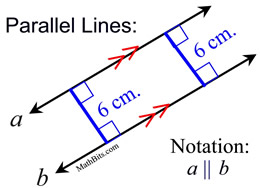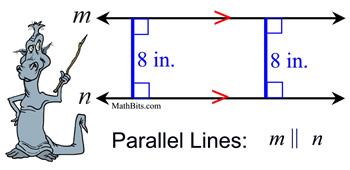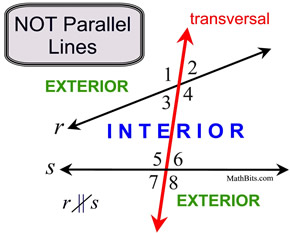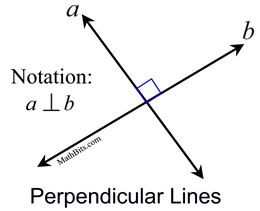Parallel lines are always the same distance apart, which is referred to as being "equidistant". For our purposes, parallel lines will always be straight lines that go on indefinitely. The parallel lines may be horizontal, vertical or slanted.
Parallel lines are marked with "feathers" (arrows) such as > or >>. Segments and rays may also be described as being parallel
When lines intersect, a series of angles are formed. Certain angles are given specific "names" based upon their locations in relation to the lines. These specific names may be used whether the lines involved are parallel or not parallel.
Each diagram above shows eight angles formed by the transversal and the two lines with which it intersects. The term "INTERIOR" refers to the space "between" those two lines, while the term "EXTERIOR" refers to the spaces that are not between those two lines (i.e. the outer regions).
Perpendicular lines always form a right angle of 90º.
Perpendicular lines are marked with a "square" (a box) drawn at the point of intersection. Segments and rays may also be described as being perpendicular
Topical Outline | JrMath Outline | MathBitsNotebook.com | MathBits' Teacher Resources
|







